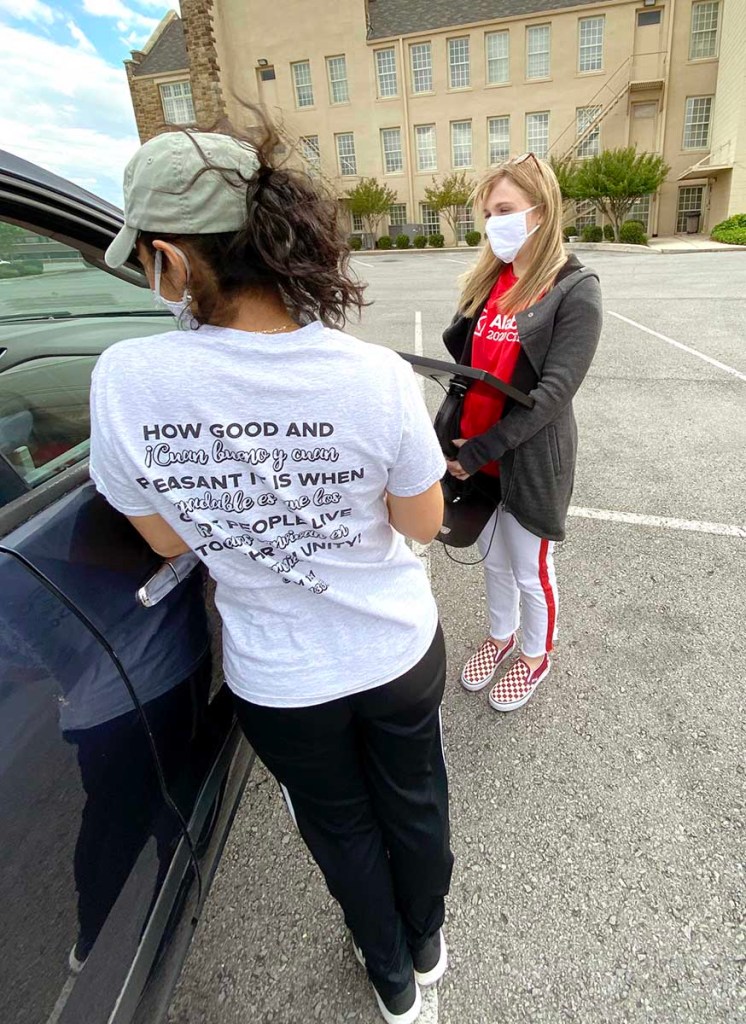(Year in review: No. 7) Census completed amid pandemic challenges
Published 5:15 am Thursday, December 24, 2020

- Paden Adams with Cullman Economic Development Agency, right, and Arleen Dominguez gather census information from a family on Wednesday, May 6 at First United Methodist Church's Hispanic ministry monthly drive-thru food bank.
Editor’s note: The Times is counting down 2020’s most noteworthy stories as determined by The Times editorial staff.
Trending
Every 10 years, the United States counts every person in all 50 states and three territories. The count has been going on since 1790, but the 2020 census – in true 2020 fashion – had several challenges.
For the first time ever, the 2020 census was primarily done online. Residents were mailed instructions on how to go online and fill out the forms, and if they did not respond, Census Bureau workers with tablets made house calls to get the information.
For Alabama and Cullman County, getting a high participation rate in the count was critical.
Getting all residents to participate in the 2020 Census was vital for elected officials who want their municipalities and eligible organizations to receive the maximum available amount of federal dollars. For Alabama, Congressional representation – which also determines Electoral College votes – was also on the line. Alabama state leaders said the state was undercounted in the 2010 census, costing the state millions of dollars in federal funding.
In the 2010 count, 72 percent of Alabamians completed the census. According to the George Washington Institute of Public Policy, Alabama currently receives $1,567 per capita, so for every person not counted, the state does not receive that funding. The most undercounted population was children.
Susan Eller, special projects coordinator for the Cullman Economic Development Department, told the Cullman Rotary Club in March, “What’s a stake is healthcare, education, roads and bridges, jobs, and one thing that’s at the forefront of everyone’s mind right now, is congressional representation. If we don’t get our counts up it could actually cause the state of Alabama to lose a congressional seat.”
Trending
Because of the importance of getting an accurate count, the Cullman Counts Committee planned events around promoting participation, funded by $40,000 grant and matching funds. Every community planned Census Days, complete with food, activities for kids and drawings to encourage people to fill out their forms.
The count officially began on March 12. The next day, Gov. Kay Ivey closed schools due to the coronavirus. Shortly after that, she issued a “Stay at Home” order. Only one community – Garden City – was able to hold its Census Day as planned.
The virus also pushed back the dates the Census Bureau was going to begin offering mobile assistance and follow up with non-responders. The July 1 completion date for the count to conclude was also pushed back to give Census Bureau workers and local committees more time to get people to respond.
Locally, the Complete Count Committee shifted gears from in-person events to online giveaways, holding drawings for gift certificates from local shops and restaurants for people who completed the census. As things opened up again, the committee hosted drive-thru events and attended community gatherings to promote completing the census form.
The Census Bureau extended the deadline from July to the end of October, but in August changed the end date to the end of September, only to be changed again to Oct. 15. Alabama, which had gotten off to a strong start in its self-response rate, fell behind other states. However, by the end of the count, the Census Bureau reported the self-response rate for Alabama was 63.5 percent – up one percentage point from the 2010 count – and the overall response rate at 99.9 percent.
Along with the procedural complications 2020 presented, there were also legal challenges. President Donald Trump had pushed for a citizenship question to be added to the census questionnaire, but the United States Supreme Court ruled that violated the U.S. Constitution.
Trump then sent the Census Bureau a memorandum directing the bureau to collect two sets of numbers, one which includes all people counted and another that does not include undocumented immigrants in each state to use for reapportioning Congressional seats. Twenty-three states sued the administration over the directive and last week the Supreme Court said it would be “premature” to take up the case now as it is “riddled with contingencies and speculation.”






